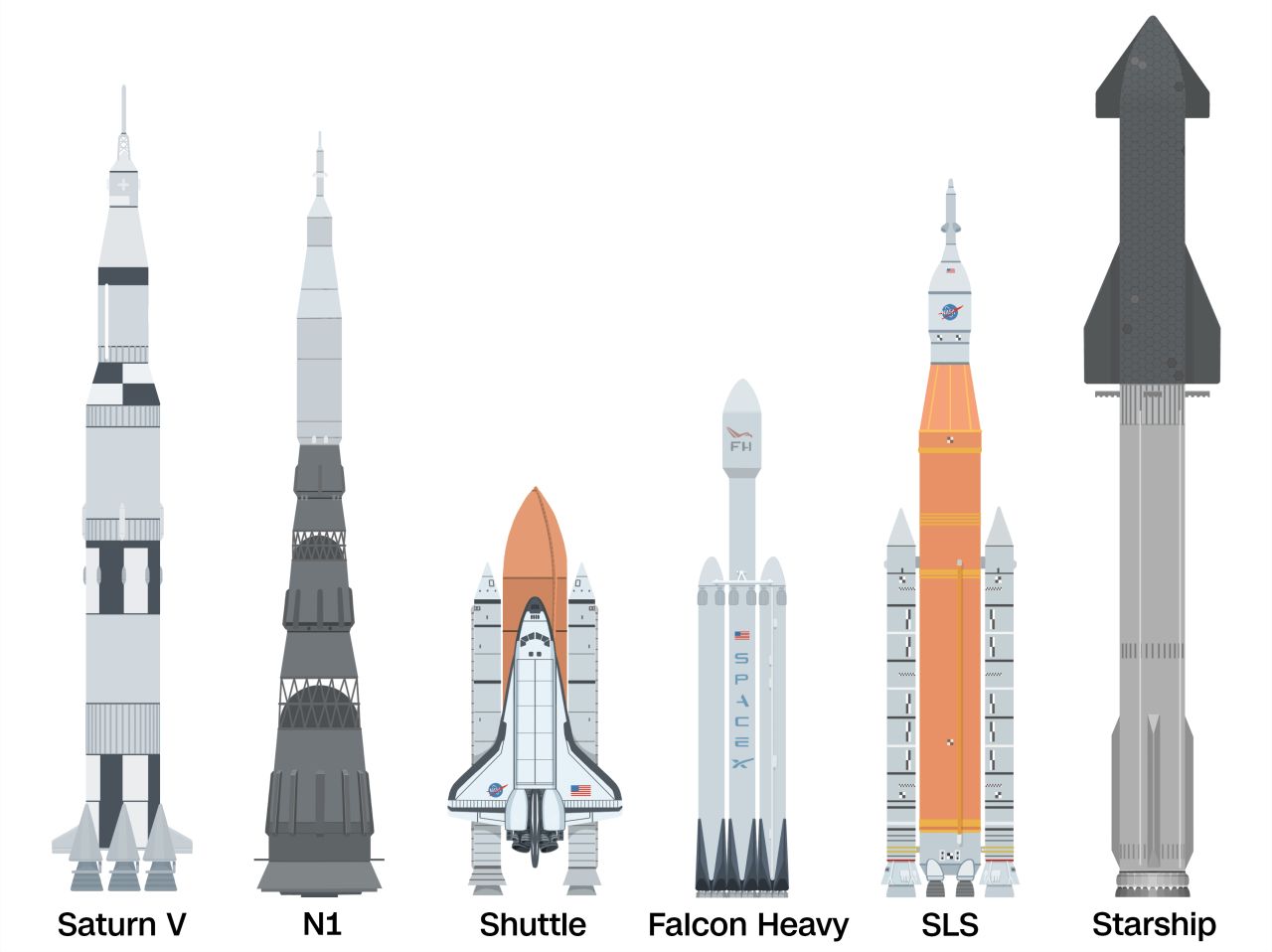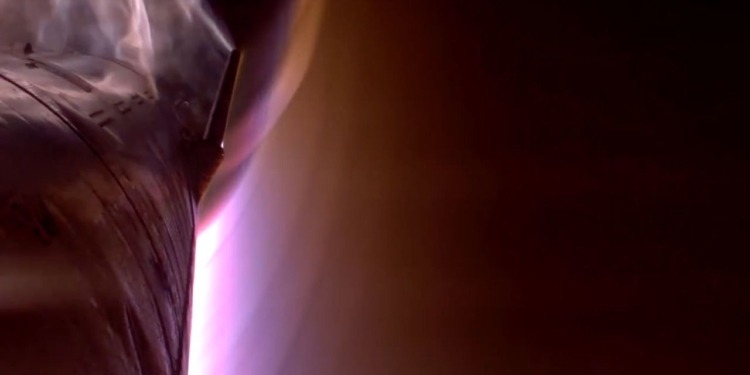A still from SpaceX’s livestream shows Starship splashing down in the Indian Ocean, according to CNN.
SpaceX expected some sunlight at Starship’s landing site in the Indian Ocean, which helped engineers see its safe landing.
That paid off today, as SpaceX saw the Starship make a safe landing at its watery target, staying intact despite a rough landing trajectory.
“Turns out the vehicle had more capability than our calculations predicted, and that is why we test like we fly,” said SpaceX engineer Kate Tice.
NASA Administrator Bill Nelson congratulated SpaceX on Starship’s sixth test flight Tuesday evening.
“Exciting to see the Raptor engine restart in space—major progress towards orbital flight,” he wrote on X. “Starship’s success is #Artemis’ success. Together, we will return humanity to the Moon & set our sights on Mars.”
Starship is, by far, the most powerful rocket ever constructed
You may have heard Starship is the biggest rocket ever created. And it is — by a long shot.
Starship stands at nearly 400 feet (121 meters) tall and packs 16.7 million pounds (7,590 tons) of force at liftoff.
Let’s compare that to some of the other largest rockets ever constructed — past and present.

Falcon Heavy: SpaceX’s own 230-foot-tall (70-meter-tall) rocket that previously held the title for most powerful operational rocket in the world. It has about 5 million pounds of thrust or roughly one-third of Starship’s power.
Saturn V: The famous NASA rocket that powered the Apollo moon landings of the 20th century put out about 7.6 million pounds of thrust at takeoff. That’s still less than half of Starship’s expected power. It stood at about 360 feet (110 meters) tall.
The Space Shuttle: NASA’s workhorse launch system in the post-Apollo era, the shuttle had two solid rocket boosters that gave off about 5.3 million pounds of force at liftoff. It was about 180 feet (55 meters) tall.
Space Launch System: NASA’s new moon rocket, which made its debut launch in 2022, is currently the most powerful rocket in operation. It produces about 8.8 million pounds of thrust — just over half the Starship’s expected output. It’s 212 feet (65 meters) tall.
Russian N1 rocket: This was Russia’s megamoon rocket of the 20th-century space race. And while it was never operational (all four launch attempts failed), Musk has said it’s the closest relative of Starship’s design. The N1 was expected to give off more than 10 million pounds of thrust at liftoff — still 40% less than Starship.






























Discussion about this post